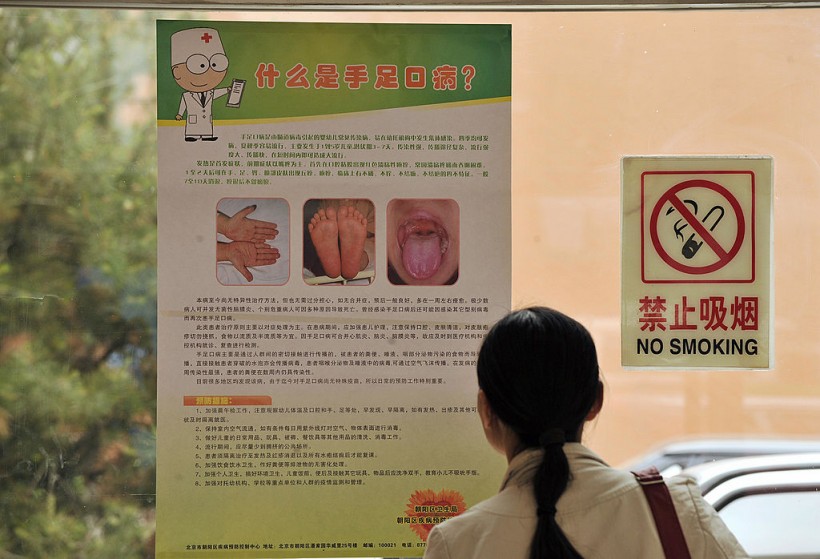The emergence of tomato fever in India has triggered fears over the outbreak in three states in the country as more children test positive for the illness. Tomato fever has been inflicting young children, which prompted health authorities to issue a health advisory and prevention guidance to parents.
To date, more than 100 children have already been infected after the first case on May 6 was reported. Scientists say that a non-life threatening, highly contagious virus linked to chikungunya, dengue fever, and hand, foot, and mouth disease is causing the new disease outbreak in India.

A visitor reads a notice warning about a deadly hand, foot and mouth disease at a childrens hospital in Beijing on May 9, 2008.
26 New Cases of Tomato Fever
A local media reported that another 26 cases are detected in the country, specifically in Tamil Nadu state and Odisha in the east, wherein children as old as nine have been infected. This brings the total cases in India to 108 after the study in the Lancet reported 82 cases since May.
The Indian Health Ministry has reminded parents to take caution about the virus in light of further cases being detected. Times of India reported that health officials also released testing and prevention guidelines to all states and urged parents to be extra vigilant when it comes to checking their children.
The guidance from the health ministry includes telling children to avoid hugging or touching other kids having fever or rash symptoms, and encouraging them to stop their thumb or finger-sucking habits. Moreso, handkerchief use is also encouraged, especially for those with running noses or coughing.
The recent study in the Lancet emphasized that the best solution for the new disease outbreak is preventing transmission via proper hand hygiene and stopping children from sharing food, clothes, and toys.
The Lancet correspondence theorizes that tomato fever is a new type of hand, foot, and mouth disease caused by an enterovirus that causes a blister-like rash. Experts warn that the virus is not exclusive to children as it can also infect adults, which could spread beyond India and infect more people in other countries if it is not controlled or prevented.
ALSO READ: Tomato Fever Spreading Among Children in India, Raising Concerns of Possible Outbreak Like Monkeypox
Symptoms of Tomato Fever
The US Sun reported that the Indian health officials urged parents to be on the lookout for a range of symptoms, including fatigue, nausea and vomiting, diarrhea, fever, dehydration, swelling of joints, body aches, and rashes or blisters. Aside from these, they said to be aware of the first symptoms of sore throat, and loss of appetite before the mouth ulcers appear.
They noted that the rash seen in kids with tomato fever is red and painful blisters spread throughout the body that gradually enlarges to the size of a tomato. They also compared the blisters to those found in monkeypox cases in children.
Moreover, the feverish symptom resembles dengue fever and chikungunya, which are infections caused by mosquitoes in other parts of the world. Medics reported that the tomato fever could be an "after-effect" of these two infections.
But more than these two viruses, health officials in India think it is mostly related to hand, foot, and mouth disease and could even be a new variant of it as tomato fever has a striking similarity of it.
RELATED ARTICLE: Study Reveals 82 Cases of Tomato Fever in India Since May; Doctors Warn It Is Very Contagious Like Other Influenza Viruses
Check out more news and information on Tomato Fever in Science Times.














